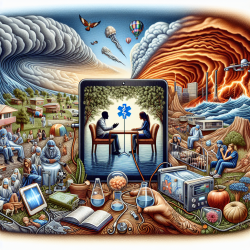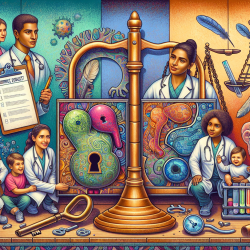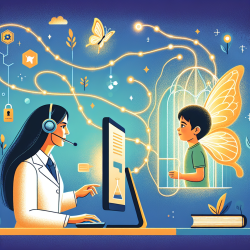Introduction
As a Special Education Director, I am constantly seeking ways to enhance the services we provide, especially in challenging environments. The research titled "Natural disasters, livelihood, and healthcare challenges of the people of a riverine island in Bangladesh: A mixed-method exploration" offers valuable insights into the healthcare challenges faced by communities in disaster-prone areas. This blog explores how these insights can be applied to improve online therapy services, particularly in regions vulnerable to natural disasters.
Understanding the Context
The study conducted in a riverine island in Bangladesh highlights the severe impact of natural disasters like floods and river erosion on the livelihoods and healthcare access of the island's inhabitants. These disasters disrupt lives, force migrations, and limit access to essential healthcare services. The research employed a mixed-method approach, combining quantitative surveys and qualitative interviews, to provide a comprehensive understanding of these challenges.
Key Findings and Implications
- Healthcare Access: The study found a low prevalence of diagnosed chronic diseases due to the lack of diagnostic facilities and certified doctors. This highlights the need for accessible healthcare solutions, which can be addressed through teletherapy and online consultations.
- Alternative Medicine: A significant portion of the community turned to alternative medicine during disasters, indicating a gap in conventional healthcare services. Online therapy platforms can bridge this gap by providing reliable medical advice and mental health support.
- Maternal and Child Health: The high rate of home births and associated risks emphasize the need for accessible maternal healthcare. Online platforms can offer prenatal and postnatal support, reducing the risks associated with home deliveries.
Implementing Research Insights in Online Therapy
Based on these findings, online therapy providers like TinyEYE can implement several strategies to enhance service delivery in disaster-prone areas:
- Expand Access: Develop partnerships with local healthcare providers to offer teletherapy services that complement existing healthcare infrastructure, ensuring continuity of care during disasters.
- Provide Training: Equip therapists with cultural competence and disaster-response training to effectively address the unique needs of communities affected by natural disasters.
- Utilize Technology: Leverage mobile technology to deliver therapy services, making them accessible even in remote areas with limited internet connectivity.
Encouraging Further Research
While the study provides valuable insights, there is a need for further research to explore the long-term impacts of natural disasters on healthcare access and the effectiveness of online therapy in such contexts. Practitioners are encouraged to engage in research initiatives that focus on innovative solutions to enhance healthcare delivery in disaster-prone regions.
To read the original research paper, please follow this link: Natural disasters, livelihood, and healthcare challenges of the people of a riverine island in Bangladesh: A mixed-method exploration.










